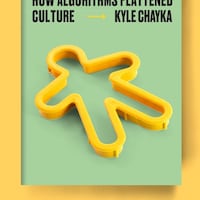Ruby Justice Thelot’s A Cyberarchaeology of Checkpoints pays homage to the personal stories shared in the comments section of YouTube videos
Checkpoint: I never thought I’d get recommended this video… I feel lost. I’m working and that’s all I have going for me at the moment. I want to finish my studies and be independent but I find it hard to make an effort.
Checkpoint: You are gonna make it… I’m sure about it. Why? Because I love you.
If you were tapped into the algorithmic YouTube rabbit holes of the 2010s, chances are you’ve stumbled on what is sometimes referred to as a digital checkpoint – personal stories shared by users in the comment section of a particular kind of video in the lo-fi ambient corners of YouTube. These videos would usually appear via autoplay on the ‘recommended for you’ sidebar, enticing users with their mysterious, Kanji-spelled titles and nostalgic 8-bit imagery that, if clicked on, would play around an hour’s worth of synthy video game music, the sort of obscure crate digger-type tunes directed at fans of Midori Takada’s Through the Looking Glass and other kinds of 80s new age or spiritual jazz. It’s here that users would take to the comments section to share personal reflections that begin with the word ‘checkpoint’, a reference to video game checkpoints – where a player saves their progress in gameplay.
One of the most popular channels for digital checkpoints was run by a user named @taia777, whose videos refreshed versions of old Nintendo songs from the likes of Donkey Kong Country and Pokémon Mystery Dungeon, accumilating hundreds of thousands of views over the years. Not too dissimilar to the online communities accumulating around ‘Lofi Hip Hop Radio to Relax/Study to’ at the time, users would regularly share their delight at encountering such videos on Autoplay – and proceed to share deeply personal checkpoints about their lives in the comments.
In the past few years, many of these videos have been taken down due to YouTube‘s copyright policy – the same Terms of Service violations that had Lo-fi girl taken offline back in 2022. Hundreds of digital checkpoints have disappeared with them, banished to the pits of the internet’s junkyard. In his book A Cyberarchaeology of Checkpoints, designer and researcher Ruby Justice Thelot pays homage to these spaces – in particular, a now-deleted video by @taia777, which had been active for ten years before disappearing off the site in 2021. Now accessible on a public archive hosted by another user @rebane2001, who saved the video and its comments alongside a million others, Thelot looks at the communities that form around these pit stops, and the individuals working to make sure these moments aren’t forgotten. Their sudden deletion, Thelot suggests, serves to remind us of the ease with which digital memories can disappear completely on third-party platforms. “The story of Checkpoints reminds us to be fully aware of the infrastructure we use when we build community in digital realms,” he concludes. “Are the structures sturdy? Who controls them? Who is responsible for archiving or providing additional fault tolerance in the community’s memory system?”
Below, we speak to Thelot about his book A Cyberarchaeology of Checkpoints, the communities surrounding these online spaces, and how we can begin to preserve digital memories.
What was your entry point into online culture?
Ruby Justice Thelot: I came into this whole thing mainly from being a participant in a lot of these niche cultures. I started a meme page in like 2012 or 3013 with some of my buddies. It was a francophone meme page here in Quebec, and we’re just making memes. That blew up, locally, of course, and I got invited by universities to speak about it. Then I realised that there was a whole field of inquiry into this very strange thing that I had been involved in. I was a participant in what people called weird Facebook – that fell off as a term, but groups like Cool Freaks’ Wikipedia Club.
One of the things that was very salient to me – and this ties in very nicely with archaeology and checkpoints, is that a lot of the pages I was on disappeared. Some of these people were posting five or six memes a day. That’s a significant amount of content that people have some kind of attachment to, and then it just disappears.
There seems to be a growing need for people to preserve digital memories – I recently spoke to PC Music’s A.G. Cook who said that one of his main goals was to transition the label into an archival project. It reminds me of what you said in your closing statement in the book, “Forget what you’ve lost, save what you can.”
Ruby Justice Thelot: I love that sentence so much. It’s just because speaking to Rebane2001, I was asking her, ‘what’s your modus operandi?’ She said, I’ve lost so many videos, so many things I cared about. The idea of the book, for each person who reads it, they also carry within themselves the memory for it to endure over time – to give cultural artefacts that people can share with one another. So not the physical item, but the story behind it.
“What I really tapped into is a community of individuals, self-funded and private individuals, who are on their own mission to digitally preserve in their own right” – Ruby Justice Thelot
I’m interested in checkpoints as a digital ritual in its own right. What do you think is the driving force behind these comments, and the culture that surrounds them? I guess the partial anonymity plays a part in how much someone can share about themselves. What do you think?
Ruby Justice Thelot: I’m a designer, like I make websites and apps and stuff like that and I really have to reckon when I do projects with the fact that designers don’t know shit. People will use your tool the way they want to use it. You think YouTube comments are going to be to say, ‘I like the song’, but then they can choose to go on there and just completely subvert the expectation and use it as their own mode of communication. So I think YouTube has an interesting social space in the comments. I think what’s interesting about checkpoints is the frequency of the reference of the comments. They do it a lot on old disco or techno songs, like ‘I fell in love with my wife on this song’, or people really reminisce about the club, the love story, and they come back and tell the story related to that track.
What I think is interesting is the semi-anonymous nature of YouTube, which on the one hand, allows for the highly toxic culture that we saw in 2010, but also, when you create a space for vulnerability, and the first user sets the tone, then you can really have people lay their heart out. Because it’s not so related to the profile. And it’s really got me thinking about whether or not the profile is a hindrance to honesty online.
Yep, Facebook’s real name policy really changed things.
Ruby Justice Thelot: The continuous nature of the profile, yeah. I was thinking about it in relation to 4chan and whether this detachment also allows for a certain level of honesty. I think there’s a detachment that allows for a certain level of honesty, it’s very beautiful. There’s a loss of self – I don’t think people have found a space to be able to do that, because that’s something we want to do fundamentally, whether that’s graffiti in bathroom stalls or the little notes you had in high school. I think we fundamentally want to divulge and tell our story, and just need the proper spaces to do that.
What other ways do you think the YouTube comment section is different from, say, TikTok or Instagram?
Ruby Justice Thelot: On something like Twitter or Instagram, there’s like a certain hierarchy for comments, some comments will make it to the top. Whereas on YouTube, something like the pinned comment flows from one into the other. The second part about it is that in the interface versus TikTok, where the comments are part of the video, there’s something that really takes away the video from you when you’re looking at it. When you’re getting the YouTube comments, you scroll up on your computer and you’re kind of just in the comments. Or if it’s on your computer, they’ll continue but you’re no longer watching it. And so you’re fully immersed in the comments in a way that I think in other interfaces, the comments are a secondary part of the experience.
There was a magical quality to encountering these things that feels lost now – that sense of being blessed with something that appears on your sidebar. It reminds me of how in the book you refer to 2012-2021 as the golden era of algorithmic recommendations – why do you think this is?
Ruby Justice Thelot: Because the title was in Kanji and Japanese characters, you couldn’t find it with American typing. And so if you were blessed on a day, and you were in a rabbit hole, it would be the next one up. And that really created a feeling of a chance encounter, which was very interesting. People were like, I can’t believe I finally got the checkpoints video. That was something that happened in the comments. And I really liked that. And so, I think the nature of that specific rabbit hole, let’s call it, was that you wouldn’t encounter it, but you didn’t quite know when.
Looking back on the project, is there anything that’s surprised you?
Ruby Justice Thelot: I was vaguely aware that people were archiving, specific organisations like Rhizome, Wayback Machine, the Internet Archive, and so on. But what I really tapped into is a community of individuals, self-funded and private individuals, who are on their own mission to digitally preserve in their own right. To me, that was one of the main takeaways of this whole experience. These people have their own gear, their own set-up, and they’re just working to do this all on their own. Speaking to Rebane2001, she has over a million videos saved at home. It was really beautiful to encounter people on a similar journey as myself, which was a journey of preservation, and a journey of identifying what to me is sort of the cultural relevance of even the most mundane little minutiae of the internet, but who see the importance of that, and want to keep it and preserve it. So that was a beautiful, sort of community and mode of behaviour that I encountered.
A Cyberarchaeology of Checkpoints is out now via Irrelevant Press.




